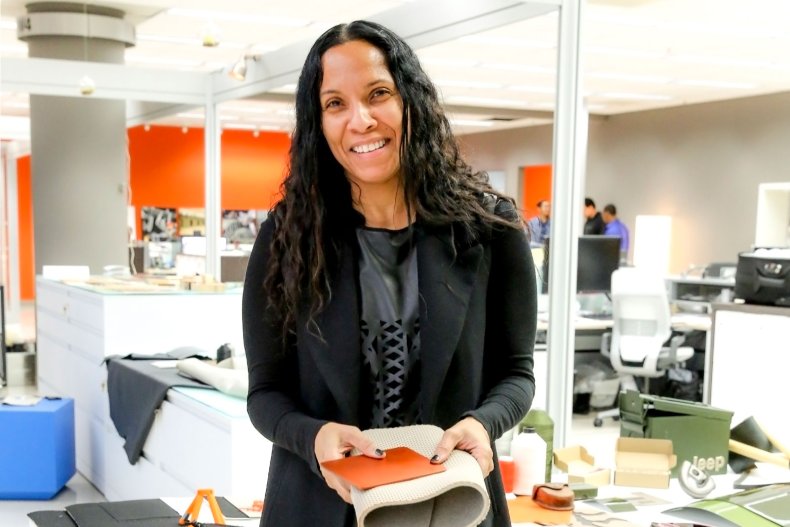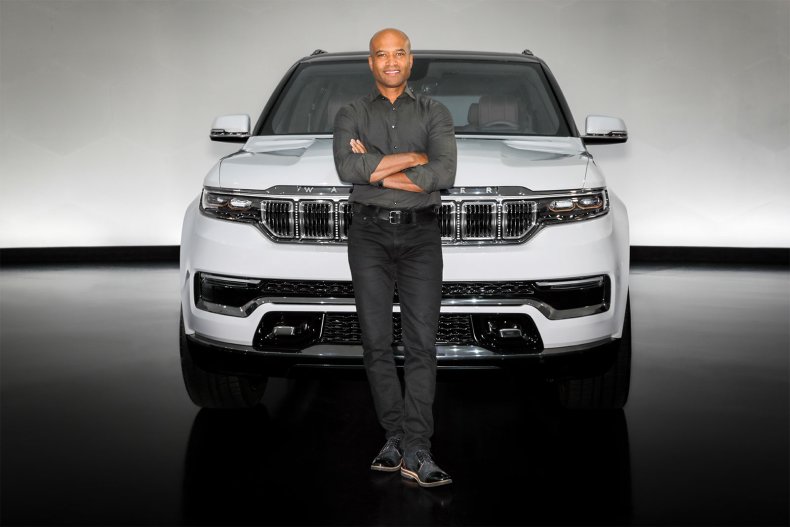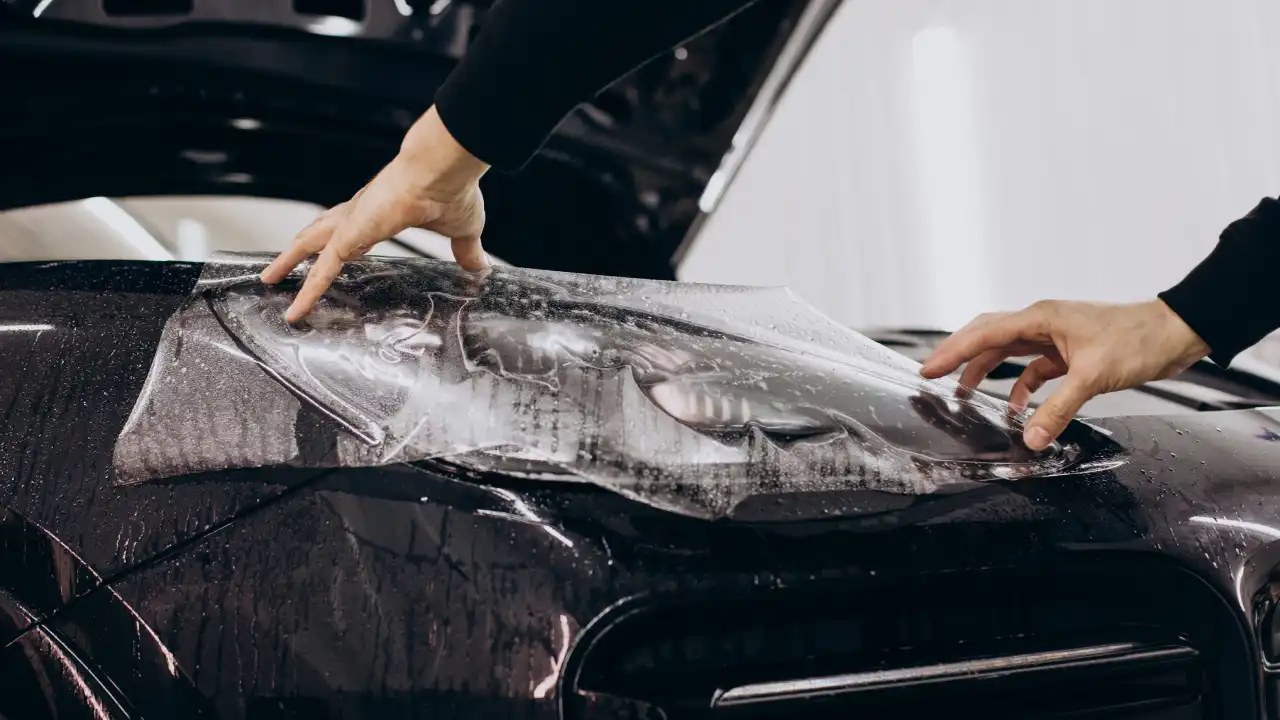Without designers, there are no cars.
Automotive designers combine knowledge of mechanics, production and materials with artistic talent to improve the style, appearance and aerodynamics of automobiles.
Much like in other professions, Black designers have fought for representation in the auto industry.
General Motors hired Edward Welburn as their first Black designer in 1972. In 2003 Welburn became the first Black Vice President of Global Design in the industry.
Black designers like Michael Burton, Crystal Windham, Earl Lucas and Chris Young have each contributed impressive feats to automotive design, from the Ford Flex to the 2021 Ford Bronco.
In 2011 when the Hyundai Sonata shook up the car market due to its modern sweeping body style, designer Andre Hudson was to thank.
According to the U.S. International Trade Commission, Black employees make up 17.2 percent of workers in automotive manufacturing but the industry lacks diversity at the leadership level.
Mentorship and collaboration have allowed today’s Black designers to make their own way, ushering in a new generation of perspectives that are responsible for some of the most impactful design decisions in the market today.
Ralph Gilles, a first generation Haitian immigrant who grew up in Montreal, is the chief design officer for a host of Stellantis brands including Chrysler, Dodge, Jeep, Ram, Maserati and Fiat.
As a Black designer, Gilles didn’t see very many people who looked like him when he started out in the industry. Throughout his automotive design career, he has been on a mission to diversify the automotive design workforce, seeing himself as a mentor for rising stars.
La Shirl Turner, a female designer who is responsible for the inspiration, research, development and coordination for all exterior and interior color and materials found in all Stellantis North American vehicles, feels the same way.

Stellantis
She and Gilles name mentorship as a key to their success.
Gilles looked up to Welburn, who was the first Black head of design in the history of the automotive industry. Welburn retired from his 44-year long career with General Motors in July 2016.
Gilles, who now holds the same position at Stellantis that Welburn did at GM, is now able to seek guidance from Welburn when navigating new situations as they’re no longer competitors.
Turner, for support, leans on a group of women in the automotive industry to this day that she met at her first internship.
“I worked with a phenomenal group of women, who showed me what being a mentor was about, who saw something in me and took a chance,” Turner told Newsweek. “Throughout my career, even to this day, I think it’s really important to have a mentor, but also to be a mentor.”
Designers Dwayne Jackson and Chris Benjamin, who work with Gilles and Turner, have known each other since high school.

Stellantis
Dwayne Jackson is the lead interior designer for the 2022 Jeep Grand Cherokee and the Wagoneer/Grand Wagoneer. Chris Benjamin is the head of Jeep, Wagoneer, Chrysler, Dodge and Ram Truck interior design.
Both know how impactful mentoring can be.
Growing together as Black designers, the Detroit duo have leaned on each other throughout their careers while also seeking wisdom from the people above them.
Benjamin remembers an early boss who would look out for him.
“When I first started out, he looked out for me on a personal level, more than just, ‘hey, where are your sketches this week?'” Benjamin told Newsweek. “I was working a second job, and I think I may have been a little tired sometimes so he approached me out of concern.”
He said it was important to know early on in his career that someone cared enough about his overall success rather than just his work output.
Research done by strategic management company McKinsey & Company, found that Black employees are more likely to view their workplace relationships as “transactional” and believe sharing their experiences as Black employees could have negative consequences.
The study analyzed data from the U.S. Bureau of Labor Statistics, the U.S. Census Bureau, and the U.S. Equal Employment Opportunity Commission along with data from 24 companies representing 3.7 million US employees to learn about the employee experience through interviews, focus groups and surveys.
Jackson points to Gilles as one of his early inspirations and mentors. Gilles took just as much from their time together as Jackson has, telling Newsweek that he values learning from this team as much as he leads them.

Their unique experiences allow each party to bring something different to the table as inspiration.
The McKinsey & Company research describes an “emotional tax” that Black employees experience in the workplace. It is a heightened feeling of being different that can have detrimental effects on health.
The best solution that the study found was mentorship and allyship to help diminish that feeling, but only one-third of Black employees surveyed reported having even one mentor.
Because they each found someone early in their career, these four designers made an intentional effort to help not only people who looked like them thrive in the industry, but provide avenues for other underrepresented cultures to thrive as well.
Gilles has 15-20 mentees in the industry, most of whom work at Stellantis.
Gilles grew up in a design era he calls “the ugly 70s,” when car exteriors leaned towards functional and away from stylish.
“I remember as a young kid going, ‘why are they so ugly,'” Gilles recalled. “There were a handful of the older cars that I thought were more attractive. So I said, ‘I got it! I’ve got to get into this world and help.’ I just started going home and sketching on cars and eventually want to do it for a living.”
Though things have since changed, when each of these designers entered the industry there were very few Black designers in the automotive industry.
Gilles is also extremely active in the Stellantis African Ancestry Network Diaspora (STAAND) in addition to playing a supporting role with the Stellantis Global Diversity Council.
“I’ve watched it be something that was a club, almost a small club of like-minded people, or people of the same heritage getting together and just talking about their challenges. Now we can take those challenges and articulate them in such a way the company takes action,” Gilles said.
In the ten years Gilles has been involved, STAAND has encouraged the higher ups to mingle with the group and held sessions directly with the executives about their grievances.
The collaboration that takes place in STAAND allows for Stellantis to build teams of diverse cultures and backgrounds to reflect the customers they are designing for.
While Gilles knew from a young age that he wanted work in automotive, Turner was not so sure.
Turner grew up with what she calls a “passion for fashion” in the heart of the Motor City. As a kid, she entered fashion design competitions and went on to study at the Detroit Institute of Art and the College of Creative Studies. Although the dream was to be a fashion designer known by name, Turner couldn’t shake her love for cars.
It was at the College of Creative Studies that Turner was able to merge both her love for textiles and automotive into one. It was there that Turner met Benjamin.
In school, Benjamin gravitated toward exterior design because ‘”the flashy thing is always the exterior.” However, upon leaving school and working full time he changed his mind.

Stellantis
“For me, it’s where you live,” Benjamin said. “In a car, you look at the outside, ‘ooh, that’s pretty.’ But when you’re driving it, experiencing it every day, you’re on the inside.”
While Jackson’s initial interest was in product design in general, he found that interior design requires the same principles.
“I like taking on new challenges, I don’t like to stay in one thing too long,” Jackson said. “Product design is great, because you can work on different products and have different products work together.”
The Black designers at Stellantis have each benefited from having someone look out for them throughout their careers and have made an intentional effort to pay it forward.
Benjamin said he has one of the most diverse teams in the building, along with Turner. Having known each other since college, they have had about 25 years to share ideas and support one another.
“I do take inspiration from the way she is with her team, really like a close knit family. And because her group does something different than just the traditional car design, they all have unique and different backgrounds as well,” Benjamin said.
Now each of these designers are in the position to be what they didn’t have when entering the industry: a mentor.
For Turner, she thought she would be a starving artist until college when she found that she could make a career in the automotive industry. Now she mentors and speaks at schools to show designers they have opportunities in autos.
“I was mentoring a young lady who was actually in manufacturing, and I had her come to the studio, because she said, ‘hey, growing up, I thought it was gonna be a designer, but my dad had other plans.’ And I said, ‘Hey, why don’t you come over and let’s meet at the studio, and I can show you a little bit,'” Turner said. “She was like, ‘wow, I think I might change because this is something I always wanted to do.’ It’s never too late to go after your dream, right?”




More Stories
Moon | Cartype
Rivian, Mercedes-Benz Joint Venture Paused
We Blew Up Our $5000 Drag Car ~ Can We Getting Fixed In Time? – Humble Mechanic